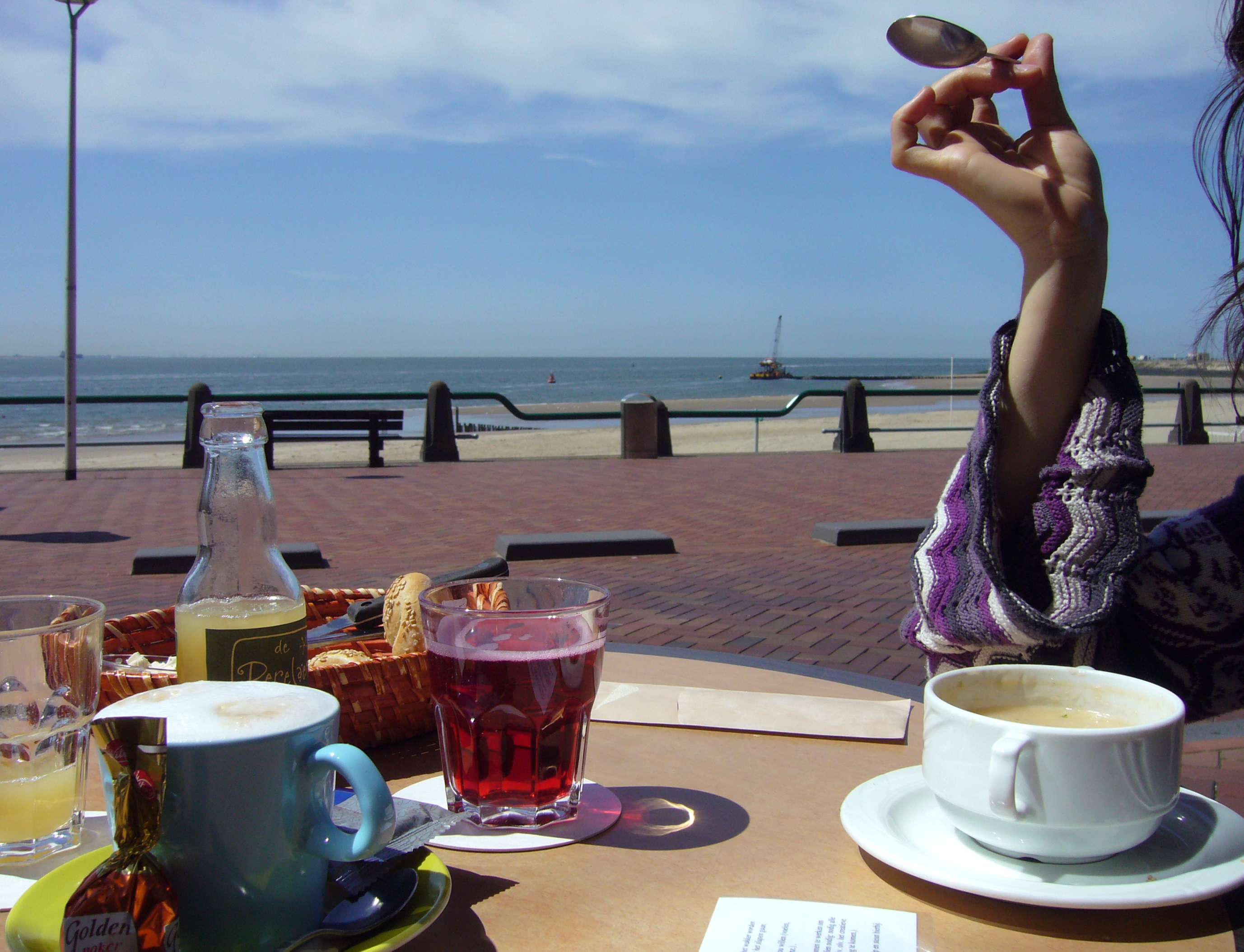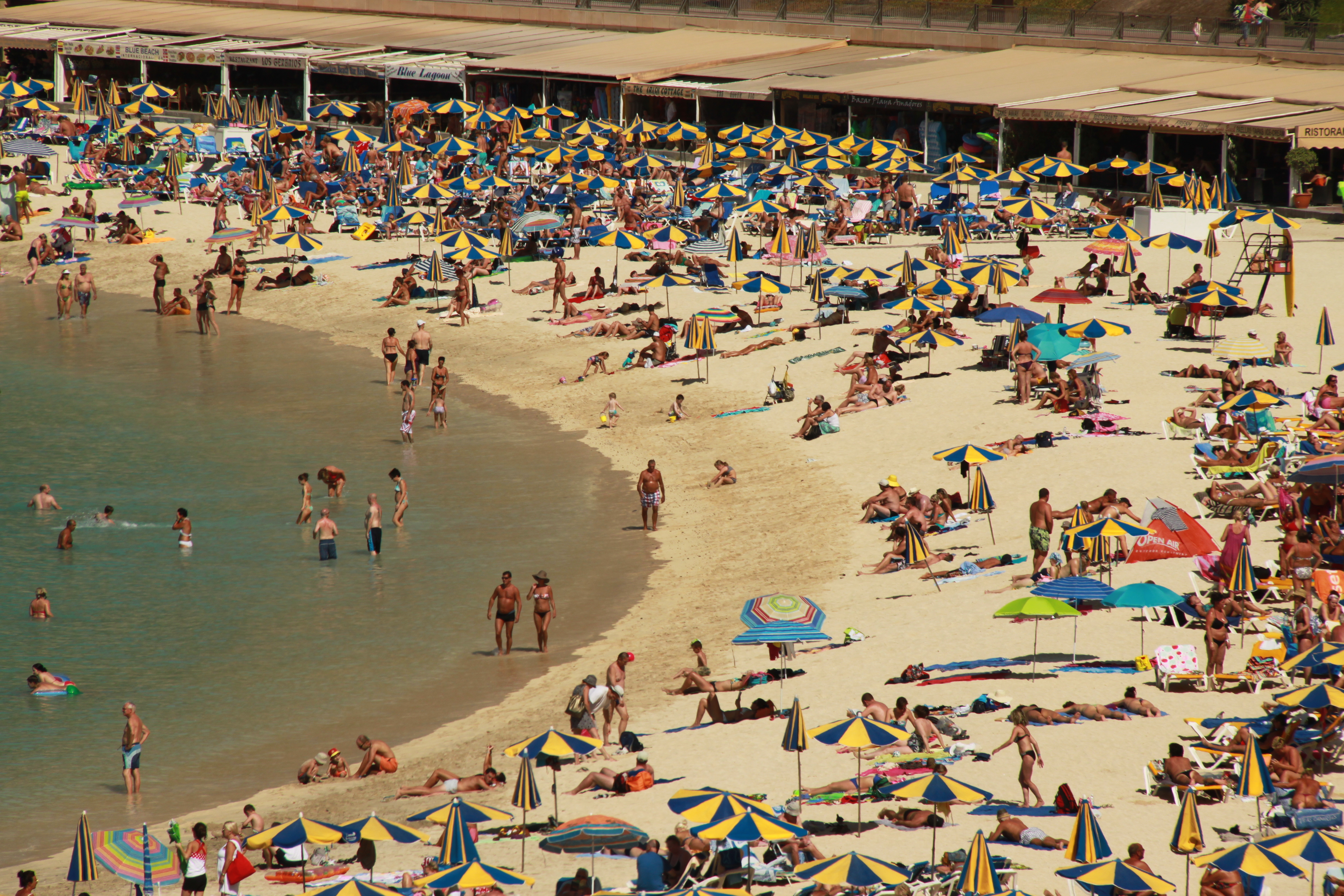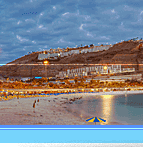Home to Amadores Beach
Gran Canaria Weather & Packing Guide 2025
Planning the perfect trip to Gran Canaria begins with understanding the island's exceptional year-round climate. Known as the "Island of Eternal Spring," Gran Canaria offers consistently pleasant weather that makes it an ideal destination every month of the year. This comprehensive guide provides detailed monthly weather patterns, essential packing recommendations, and insider tips to help you maximize your Canarian adventure.
🌤️ Quick Weather Summary:
• Average year-round temperature: 18°C - 29°C (64°F - 84°F)
• Peak season: December-February (winter escape) & July-August (summer holidays)
• Best value: March-May & September-November
• Wettest month: December (31mm rainfall)
• Driest months: June-August (minimal rainfall)
• Warmest sea temperatures: September (23°C/73°F)
Understanding Gran Canaria's Unique Climate
Gran Canaria's position off the African coast, combined with the moderating influence of the Atlantic Ocean, creates a subtropical climate that remains remarkably stable throughout the year. The island experiences minimal seasonal variation, with temperatures rarely dropping below 15°C (59°F) or exceeding 30°C (86°F) at coastal locations.
The island's diverse topography creates distinct microclimates, from the warm, dry coastal areas where most tourists stay, to the cooler, more humid mountains in the interior. This variety means that regardless of the season, you can find the perfect conditions for your preferred activities.
Coastal vs. Interior Climate Differences
Coastal Areas (Including Amadores Beach):
- Consistently warm temperatures year-round
- Minimal rainfall, especially in summer months
- Gentle ocean breezes providing natural cooling
- 10+ hours of sunshine daily during summer
- Ideal for beach activities, water sports, and relaxation
Mountain Interior:
- Temperatures 5-10°C cooler than coastal areas
- Higher humidity and more frequent cloud cover
- Occasional rain throughout the year
- Perfect for hiking and exploring nature
- Dramatic landscape changes within short distances
Month-by-Month Weather Guide
Understanding the subtle seasonal variations helps you choose the perfect time for your Gran Canaria vacation and pack accordingly for optimal comfort during your stay.
January - Winter Warmth (Peak Season)
Temperature: 18°C - 22°C (64°F - 72°F)
Sea Temperature: 18°C (64°F)
Rainfall: 25mm (moderate)
Sunshine Hours: 6-7 hours daily
Crowd Level: Very High
January marks the heart of Gran Canaria's winter tourist season, as Northern Europeans escape harsh winter conditions back home. Despite being the "coldest" month, temperatures remain pleasantly mild for outdoor activities. The almond trees begin blooming mid-month, creating spectacular pink displays across the island's interior.
✈️ January Packing Essentials:
• Light layers for variable temperatures
• Windproof jacket for evening strolls
• Comfortable walking shoes for exploring
• Sunscreen (UV remains strong year-round)
• Light rain jacket for occasional showers
February - Carnival Season (Peak Season)
Temperature: 18°C - 22°C (64°F - 72°F)
Sea Temperature: 17°C (63°F)
Rainfall: 22mm (low-moderate)
Sunshine Hours: 7-8 hours daily
Crowd Level: Very High
February brings Gran Canaria's famous Carnival celebrations, transforming Las Palmas into a vibrant festival destination. This is also the peak month for romance, with Valentine's Day celebrations enhanced by the island's mild, romantic climate. The Almond Blossom Festival showcases spectacular flowering displays throughout the island.
February Highlights:
- Las Palmas Carnival - one of the world's most spectacular
- Almond Blossom Festival - breathtaking natural beauty
- Perfect temperatures for romantic getaways
- Ideal conditions for coastal walks and sightseeing
March - Spring Awakening (Shoulder Season)
Temperature: 19°C - 23°C (66°F - 73°F)
Sea Temperature: 18°C (64°F)
Rainfall: 19mm (low)
Sunshine Hours: 8 hours daily
Crowd Level: High (Easter period)
March represents the beginning of Gran Canaria's most pleasant period, as temperatures start rising while tourist crowds begin to diminish slightly. This month offers excellent value for accommodations outside the Easter week, making it perfect for budget-conscious travelers seeking quality weather.
The Rally Islas Canarias brings motorsport excitement to Gran Canaria in March, while hiking conditions become ideal as temperatures warm but haven't yet reached summer peaks.
April - Perfect Balance (Shoulder Season)
Temperature: 20°C - 24°C (68°F - 75°F)
Sea Temperature: 19°C (66°F)
Rainfall: 12mm (low)
Sunshine Hours: 8-9 hours daily
Crowd Level: Moderate
April delivers some of Gran Canaria's most perfect weather conditions, with warm days, comfortable nights, and minimal rainfall. This month offers the ideal combination of excellent weather and manageable tourist crowds, making it a favorite among experienced travelers.
Hiking enthusiasts particularly love April, as temperatures remain comfortable for challenging mountain trails while the landscape shows its spring colors. Water sports begin picking up as sea temperatures become more inviting.
🥾 April Activity Recommendations:
• Mountain hiking in Roque Nublo area
• Windsurfing and kitesurfing (especially Fuerteventura)
• Photography tours for spring landscapes
• Cycling adventures through diverse terrain
• Golf in perfect conditions
May - Pre-Summer Excellence (Shoulder Season)
Temperature: 21°C - 25°C (70°F - 77°F)
Sea Temperature: 20°C (68°F)
Rainfall: 6mm (very low)
Sunshine Hours: 9 hours daily
Crowd Level: Moderate
May represents one of Gran Canaria's most attractive months, offering warm, stable weather with minimal rainfall and increasing sunshine hours. The sea temperature becomes comfortable for extended swimming, while land temperatures remain perfect for all outdoor activities.
This month provides excellent value as hotel rates haven't yet reached summer peaks, while weather conditions rival the best summer months. May is particularly popular with families planning early summer vacations.
June - Summer Begins (High Season)
Temperature: 23°C - 27°C (73°F - 81°F)
Sea Temperature: 21°C (70°F)
Rainfall: 2mm (minimal)
Sunshine Hours: 10 hours daily
Crowd Level: High
June marks the beginning of Gran Canaria's summer season, with the driest conditions of the year and maximum sunshine hours. This month offers the perfect introduction to summer weather without the intense heat of July and August.
Beach conditions become ideal in June, with warm air temperatures, comfortable sea temperatures, and virtually guaranteed sunshine. This month particularly suits travelers seeking reliable beach weather for water sports and relaxation.
July - High Summer Heat (Peak Season)
Temperature: 24°C - 29°C (75°F - 84°F)
Sea Temperature: 22°C (72°F)
Rainfall: 1mm (virtually none)
Sunshine Hours: 10+ hours daily
Crowd Level: Very High
July brings Gran Canaria's peak summer conditions, with hot, dry weather and maximum sunshine hours. This month attracts Spanish holidaymakers and international visitors seeking guaranteed beach weather, though it also brings the highest accommodation prices and largest crowds.
Water sports enthusiasts find July ideal, with warm sea temperatures perfect for diving, snorkeling, and extended swimming sessions. However, the heat can make inland hiking challenging during midday hours.
⚠️ July Heat Management Tips:
• Plan outdoor activities for early morning or late afternoon
• Seek shade during 12:00-16:00 peak heat hours
• Increase hydration significantly
• Use high SPF sunscreen and reapply frequently
• Consider air-conditioned accommodations
August - Peak Summer Intensity (Peak Season)
Temperature: 24°C - 29°C (75°F - 84°F)
Sea Temperature: 23°C (73°F) - warmest of the year
Rainfall: 3mm (minimal)
Sunshine Hours: 10+ hours daily
Crowd Level: Very High
August represents Gran Canaria's hottest month, with the warmest sea temperatures of the year making it perfect for serious beach enthusiasts. The combination of hot air temperatures and warm sea creates ideal conditions for water-based activities, though land-based activities require careful timing.
This month also brings the highest probability of experiencing calima - hot, dusty winds from the Sahara that can temporarily reduce visibility and increase temperatures. However, these events typically last only 1-3 days.
September - Autumn Perfection (Shoulder Season)
Temperature: 23°C - 27°C (73°F - 81°F)
Sea Temperature: 23°C (73°F) - perfect for swimming
Rainfall: 9mm (low)
Sunshine Hours: 8-9 hours daily
Crowd Level: Moderate
September is widely considered one of Gran Canaria's best months, offering the warmest sea temperatures of the year combined with more comfortable air temperatures as summer's intensity begins to wane. This creates ideal conditions for all activities while tourist crowds diminish significantly.
The sea retains all the warmth accumulated during summer months, making September perfect for diving, snorkeling, and extended beach sessions. Meanwhile, hiking becomes enjoyable again as temperatures cool from summer peaks.
October - Golden Autumn (Shoulder Season)
Temperature: 22°C - 26°C (72°F - 79°F)
Sea Temperature: 22°C (72°F)
Rainfall: 15mm (moderate)
Sunshine Hours: 7-8 hours daily
Crowd Level: Moderate
October maintains excellent weather conditions while offering some of the best value of the year. The sea remains warm from summer heating, while air temperatures become perfect for hiking and outdoor exploration. This month attracts experienced travelers seeking optimal weather-to-cost ratios.
Cultural events increase in October as the weather cools slightly, making it comfortable for festivals and outdoor celebrations. The WOMAD Festival in Las Palmas typically occurs in November, but October offers perfect weather for cultural exploration.
November - Mild Transition (Low Season)
Temperature: 21°C - 25°C (70°F - 77°F)
Sea Temperature: 21°C (70°F)
Rainfall: 18mm (moderate)
Sunshine Hours: 6-7 hours daily
Crowd Level: Low
November offers excellent value for budget-conscious travelers, with pleasant weather conditions and significantly reduced accommodation prices. The WOMAD Festival transforms Las Palmas into a cultural hub, while cooler temperatures make scenic drives and hiking more comfortable.
This month provides perfect conditions for exploring Gran Canaria's interior landscapes, including the lush Barranco de Guayadeque and mountain regions that become less accessible during summer heat.
December - Winter Returns (Peak Season)
Temperature: 19°C - 23°C (66°F - 73°F)
Sea Temperature: 19°C (66°F)
Rainfall: 31mm (highest of the year)
Sunshine Hours: 6 hours daily
Crowd Level: Very High
December marks the return of winter tourist season as Northern Europeans begin their annual migration to escape cold home climates. Despite being the wettest month, rainfall remains modest by most standards, typically occurring in brief showers that quickly clear.
Christmas and New Year celebrations in Gran Canaria offer unique experiences, with outdoor festivities possible due to mild weather conditions. However, accommodation prices reach annual peaks during the holiday period.
Seasonal Packing Strategies
Gran Canaria's consistent climate allows for relatively simple packing throughout the year, but understanding seasonal variations helps optimize comfort and enjoyment during your stay.
Essential Items for All Seasons
🎒 Year-Round Packing Essentials:
• High SPF sunscreen (30+ minimum)
• Sunglasses with UV protection
• Wide-brimmed hat or cap
• Lightweight, breathable clothing
• Comfortable walking shoes
• Swimwear and beach accessories
• Light jacket or sweater for evenings
• Personal medications and basic first aid
Summer Packing (June - August)
Clothing Priorities:
- Lightweight, loose-fitting clothing in natural fabrics
- Multiple swimsuits for extended beach time
- Light, breathable sleepwear for warm nights
- Minimal formal wear (casual dress codes prevail)
- Sandals and flip-flops for beach activities
Sun Protection:
- Extra-high SPF sunscreen (50+ recommended)
- UV-protective clothing for sensitive skin
- Beach umbrella or portable shade
- After-sun lotion for daily skin care
Winter Packing (December - February)
Layering Strategy:
- Light sweaters or cardigans for cool evenings
- Windproof jacket for coastal walks
- Long pants for mountain excursions
- Closed-toe shoes for hiking and exploring
- Light scarf for variable conditions
Rain Preparation:
- Compact umbrella for brief showers
- Waterproof jacket or poncho
- Quick-dry clothing for unpredictable weather
- Waterproof bag for electronics and documents
Shoulder Season Optimization (March-May, September-November)

Perfect shoulder season weather allows for comfortable outdoor dining and café culture, ideal for those seeking pleasant temperatures without summer crowds.
These months offer the most versatile weather conditions, allowing for the widest range of activities with strategic packing:
- Versatile clothing suitable for both warm days and cool evenings
- Layers that can be easily added or removed
- Comfortable shoes suitable for extended walking and light hiking
- Beach gear for warm afternoon sessions
- Light jacket for variable weather conditions
Activity-Specific Weather Considerations
Gran Canaria's diverse activity options benefit from understanding how weather patterns affect different pursuits throughout the year.
Beach and Water Sports

Peak summer season brings perfect beach weather but also larger crowds - ideal for water sports and beach activities when sea temperatures reach their warmest.
Optimal Months: June - October
Sea Temperature Peak: September (23°C/73°F)
Best Conditions: Warm air temperatures combined with comfortable sea temperatures
Water sports enthusiasts find Gran Canaria most appealing during the warmer months when sea temperatures make extended water activities comfortable. September offers the perfect combination of warm sea temperatures with more moderate air temperatures.
Hiking and Mountain Exploration
Optimal Months: October - May
Temperature Range: 20°C - 25°C (68°F - 77°F)
Conditions: Comfortable temperatures without summer heat intensity
Mountain hiking becomes challenging during summer months due to intense heat and minimal shade. Spring and autumn offer ideal conditions with comfortable temperatures and clear visibility for spectacular mountain views.
Golf and Outdoor Sports
Optimal Months: November - April
Temperature Range: 18°C - 25°C (64°F - 77°F)
Benefits: Comfortable temperatures for extended outdoor activities
Golf courses across Gran Canaria provide year-round play, but cooler months offer more comfortable conditions for full rounds and improved performance during longer activities.
Cultural and Sightseeing Activities
Optimal Months: March - May, September - November
Benefits: Moderate temperatures, fewer crowds, comfortable walking conditions
Exploring Gran Canaria's cultural attractions, museums, and historic sites becomes most enjoyable during shoulder seasons when temperatures remain comfortable for extended walking and outdoor exploration.
Weather-Related Travel Tips
Maximizing your Gran Canaria experience requires understanding how to work with the island's weather patterns rather than against them.
UV Protection Strategies
Gran Canaria's proximity to the equator means intense UV radiation year-round, even during cloudy conditions. The island's clear air and reflective surfaces can lead to unexpected sunburn even in cooler months.
Daily UV Protection:
- Apply broad-spectrum SPF 30+ sunscreen 30 minutes before sun exposure
- Reapply every 2 hours and after swimming or sweating
- Seek shade during peak UV hours (11:00-15:00)
- Wear UV-protective sunglasses and wide-brimmed hats
- Consider UV-protective clothing for sensitive areas
Hydration and Heat Management
Even during Gran Canaria's mild winter months, dehydration can occur due to consistent sunshine and dry air. Summer months require particularly careful attention to hydration levels.
Hydration Guidelines:
- Increase water intake significantly during summer months
- Avoid alcohol during peak heat hours
- Choose water-rich fruits for natural hydration
- Monitor urine color as a hydration indicator
- Take frequent breaks in shade during outdoor activities
Altitude and Microclimate Awareness
Gran Canaria's dramatic elevation changes create significant temperature variations within short distances. Mountain areas can be 10°C cooler than coastal regions, requiring adaptation in clothing and activity planning.
🏔️ Altitude Travel Tips:
• Pack layers for mountain excursions
• Check weather conditions for interior destinations
• Allow extra time for weather-related delays
• Carry windproof clothing for exposed ridges
• Monitor children and elderly for altitude effects
Seasonal Events and Weather Connections
Gran Canaria's event calendar aligns closely with weather patterns, creating optimal conditions for different types of celebrations and activities throughout the year.
Winter Festival Season (December - February)
Mild winter weather enables outdoor festivals and celebrations that would be impossible in Northern European climates. Las Palmas Carnival, the Almond Blossom Festival, and various cultural events take advantage of comfortable outdoor conditions.
Spring Activity Season (March - May)
Perfect temperatures for outdoor sports events, including the Rally Islas Canarias in March and various hiking and cycling events. Easter celebrations benefit from pleasant weather for outdoor processions and family activities.
Summer Tourism Peak (June - August)
Maximum sunshine hours and warm sea temperatures create ideal conditions for beach festivals, water sports competitions, and outdoor dining events. However, some cultural events move indoors or to evening hours to avoid peak heat.
Autumn Cultural Season (September - November)
Cooling temperatures and return to comfortable hiking conditions enable cultural festivals like WOMAD in November. This season also marks the return of evening outdoor events as temperatures become more pleasant for extended outdoor activities.
Climate Change and Future Considerations
Gran Canaria's climate remains remarkably stable compared to many global destinations, but subtle changes in weather patterns may affect future travel planning. Understanding these trends helps ensure optimal trip timing.
Current Climate Trends
Recent observations indicate slightly warmer average temperatures during winter months and extended periods of high-pressure systems leading to longer dry spells. These changes generally benefit tourism by extending the comfortable weather seasons.
Planning Recommendations
Current climate trends suggest that shoulder seasons (March-May, September-November) may become even more attractive for visitors seeking the perfect balance of excellent weather and reasonable accommodation prices.
Conclusion: Your Perfect Weather Window
Gran Canaria's exceptional climate provides opportunities for memorable vacations throughout the year, with each season offering distinct advantages depending on your priorities and preferences. Whether seeking guaranteed beach weather, optimal hiking conditions, cultural exploration opportunities, or maximum value for money, understanding the island's weather patterns ensures you choose the perfect time for your individual travel goals.
The island's nickname "Island of Eternal Spring" accurately reflects its consistently pleasant conditions that make any month a good month to visit. By matching your activity preferences with optimal weather conditions and considering factors like crowd levels and accommodation prices, you can design the perfect Gran Canaria experience that takes full advantage of this Atlantic paradise's remarkable climate.
Pack wisely, time your visit strategically, and prepare for a destination where excellent weather is virtually guaranteed year-round, making every day an opportunity for outdoor adventure and relaxation in one of Europe's most climatically blessed destinations.
|









